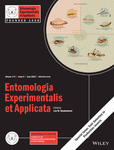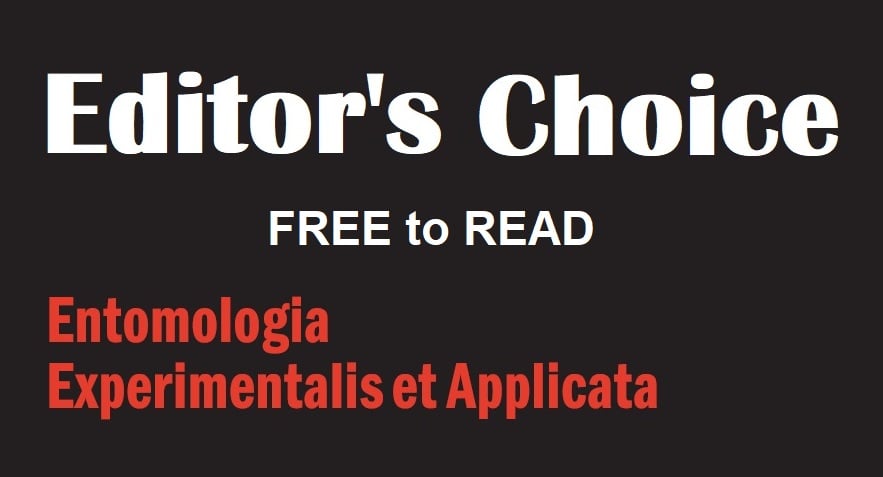Entomologia Experimentalis et Applicata
Journal list menu
Export Citations
Download PDFs
ISSUE INFORMATION
Special Issue: Trait Selection in Production Insects
INTRODUCTION
Trait selection in production insects—An introduction to the issue and a review of responses to artificial selection
- Pages: 443-462
- First Published: 17 April 2025
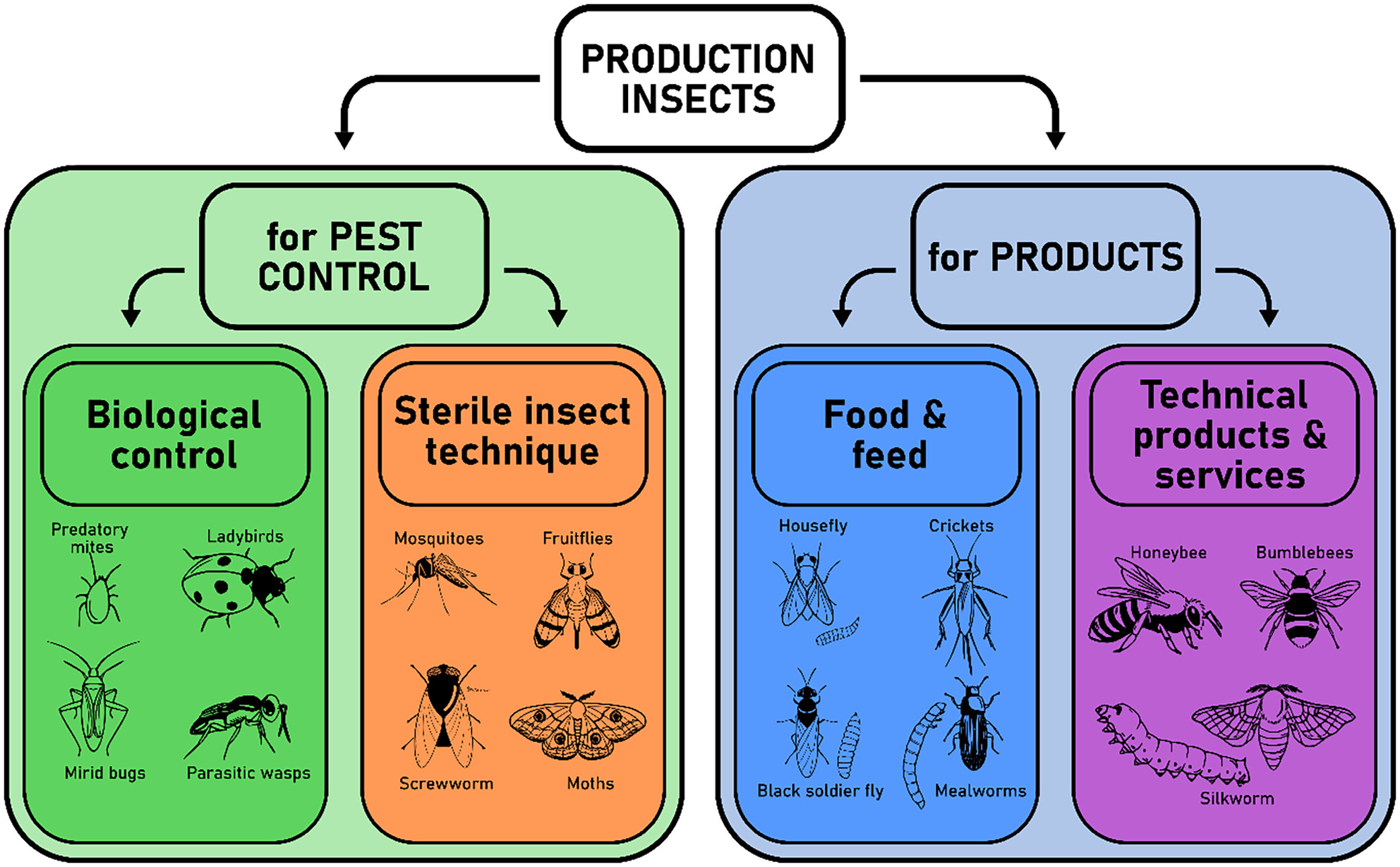
This special issue contains reviews and original articles on trait selection in production insects. Production insects yield a product of human interest. Trait selection refers to the choice of traits of interest for the insect producer, as well as the improvement of a production trait through insect breeding. In this introduction to the issue, we also systematically review the literature on effect sizes and correlated responses of artificial selection for trait improvement in production insects.
MINI REVIEW
What is the potential for artificial selection of insect biological control traits? A systematic review of their genetic variation, heritability, and evolvability
- Pages: 463-497
- First Published: 02 May 2025
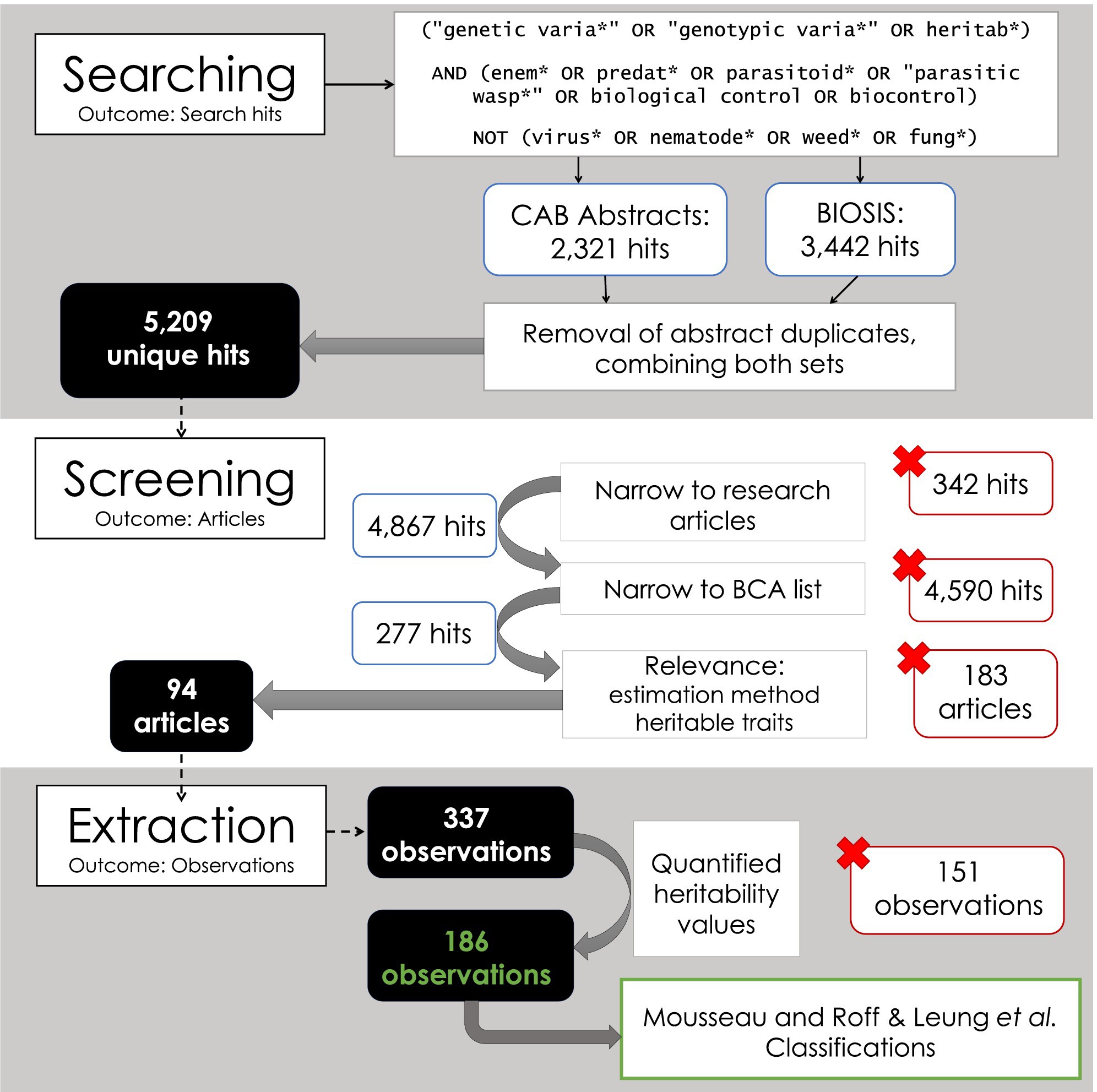
Growing interest in optimizing biocontrol traits, particularly due to Nagoya Protocol constraints, necessitates understanding their heritability and genetic variation. This systematic review of 5209 studies on arthropod biocontrol agents yielded 94 relevant articles, with 42 providing heritability values. Strong genetic variation was observed for traits relevant to pest suppression and mass rearing, while data on abiotic/biotic adaptation were limited. We highlight the potential for artificial selection of biocontrol traits and call for improved data collection and revisions to the Nagoya Protocol.
The unpaved road towards efficient selective breeding in insects for food and feed—A review
- Pages: 498-521
- First Published: 14 November 2024
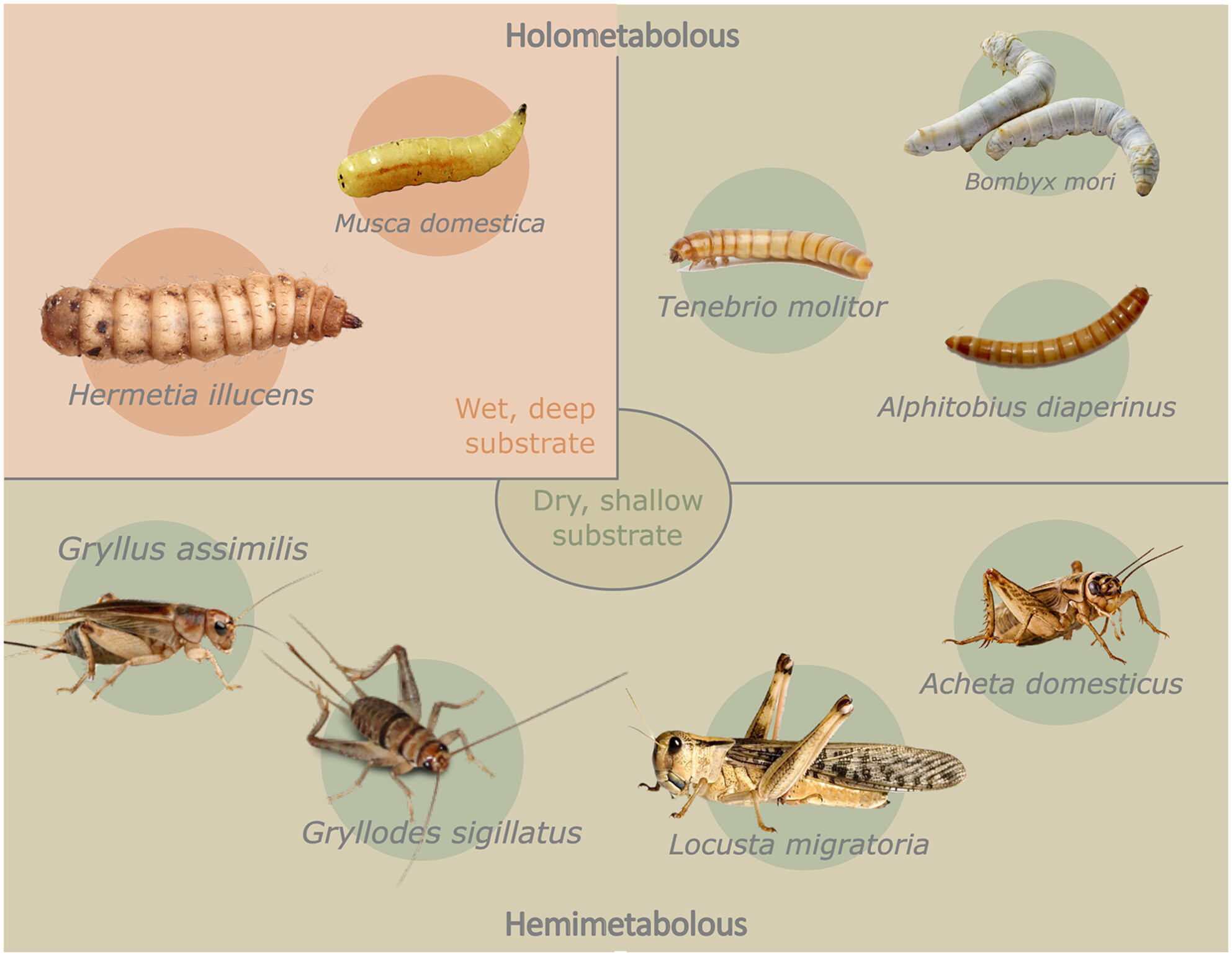
Insect farming can boost food security and reduce agriculture's impact on the environment, but it needs optimisation. Selective breeding, although not widely used in insect farming, holds potential for improvement. This review examines the application of selective breeding to insects. It discusses setting breeding goals, measuring traits, estimating genetic values, choosing breeding strategies and managing genetic diversity. The review integrates insights from animal breeding, genetics, evolutionary biology and entomology, providing a comprehensive guide to improving insect production through selective breeding.
ORIGINAL ARTICLE
Artificial Selection
Selection for zoophagy influences biocontrol efficacy and fruit damage by Dicyphus hesperus in greenhouses
- Pages: 522-531
- First Published: 10 April 2025
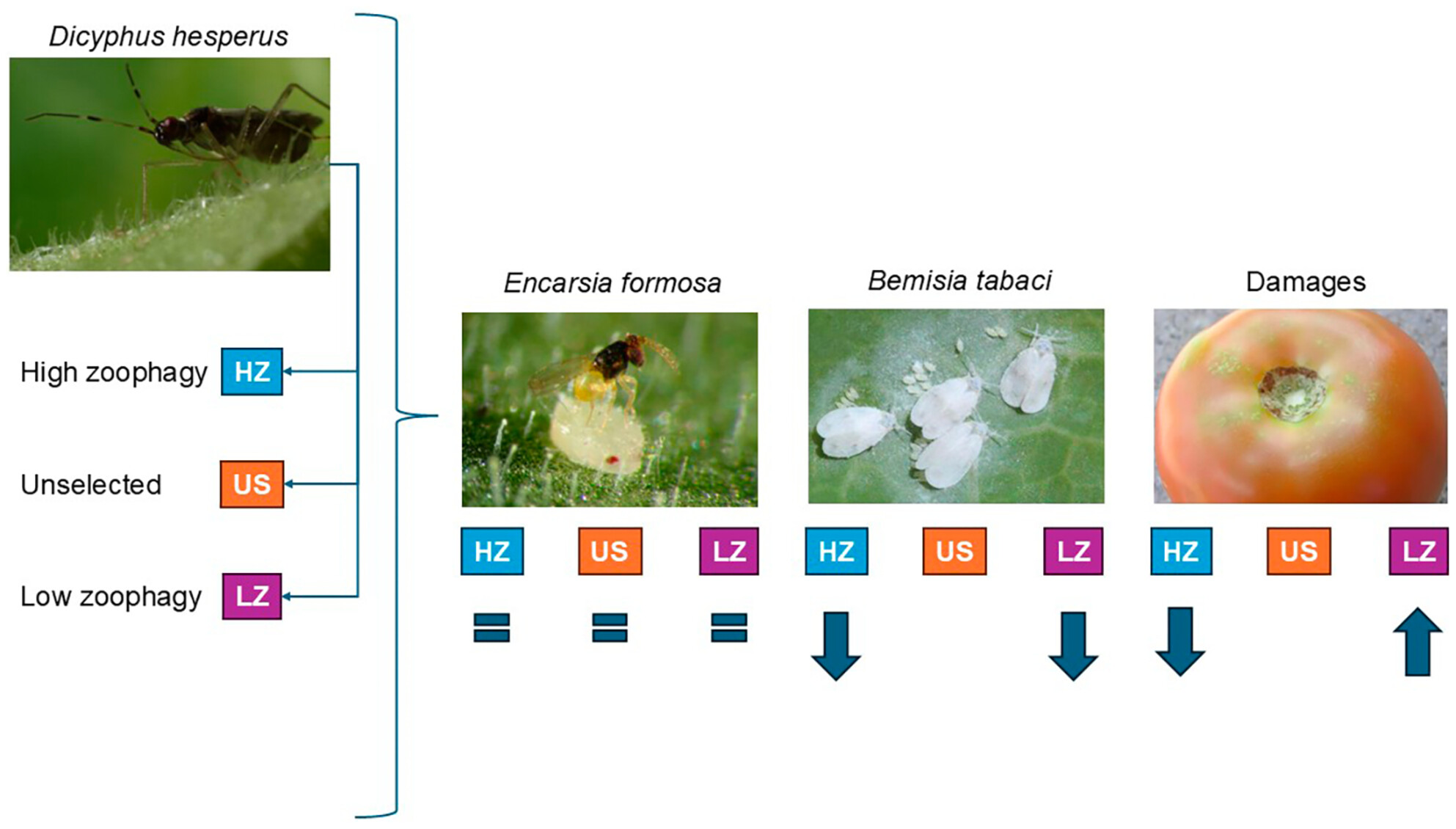
Dicyphus hesperus, a zoophytophagous predator, effectively controls Bemisia tabaci in tomato greenhouses. Highly zoophagous lines rapidly reduced whitefly populations without causing significant damage to tomatoes, whereas lowly zoophagous lines were equally efficient over time but caused more damage. The introduction of the parasitoid wasp Encarsia formosa also reduced the B. tabaci populations, but D. hesperus lines did not affect E. Formosa abundance. The findings suggest that artificial selection on foraging behavior in D. hesperus produced more efficient and less damaging lines.
Correlated response to selection for increased body weight on fecundity in Hermetia illucens
- Pages: 532-544
- First Published: 24 March 2025
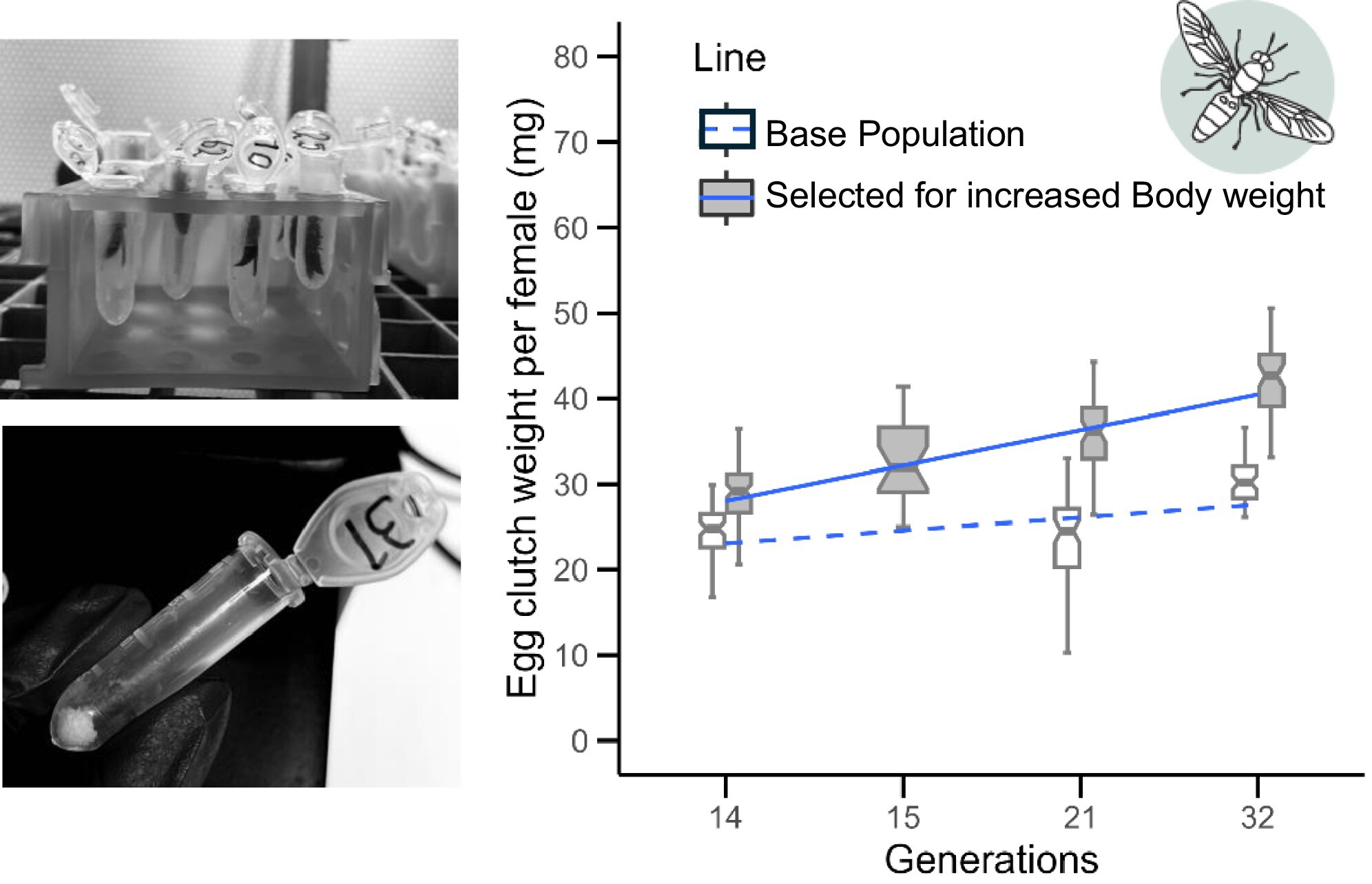
Selection for economically interesting traits like body weight can play a crucial role in lowering production costs in black soldier fly, Hermetia illucens (Diptera: Stratiomyidae). However, how selection for higher larval body weight impacts fecundity, another economically important trait, is not known. This study investigates the phenotypic correlation between body weight and fecundity in a long-term selective breeding program. Selection for higher larval body weight showed a positive increase in fecundity in black soldier fly in both laboratory and large-scale production.
Selection for increased sexual bimaturism in the common housefly, Musca domestica
- Pages: 545-557
- First Published: 27 December 2024
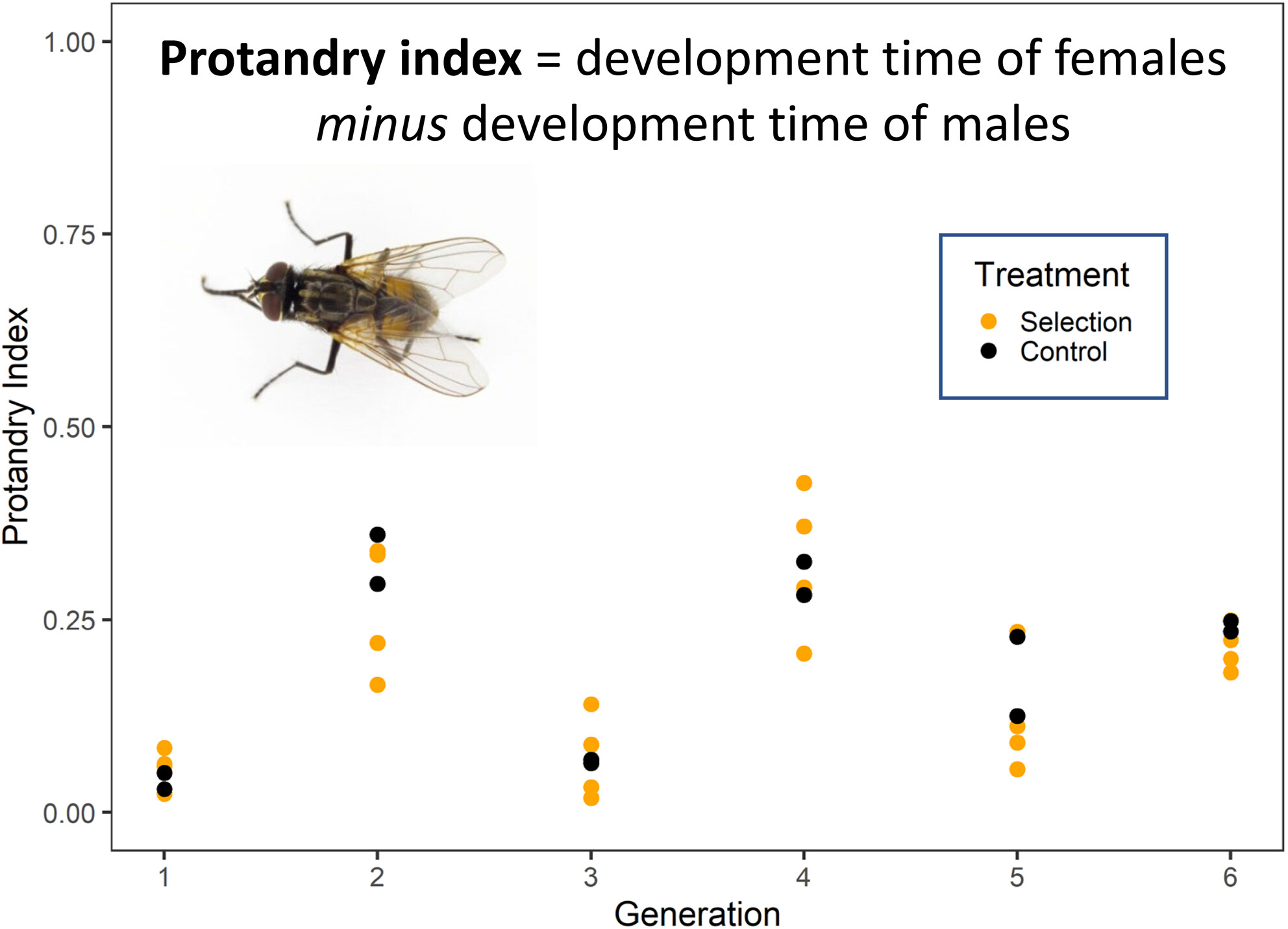
Females and males may have different economic value in insect production. We selected houseflies, Musca domestica (Diptera: Muscidae), for six generations for increased sexual bimaturism by breeding early-emerging males with late-emerging females. We found no increase in sexual bimaturism and no correlated responses in fecundity, survival and hatchability, but body size correlated positively with developmental time in females. These results are relevant for commercial fly production.
Genetic Variation and Genotype*Environment Interaction
Variation in strain performance and estimates of heritability of body size indicate considerable potential for genetic improvement of the black soldier fly (Hermetia illucens)
- Pages: 558-574
- First Published: 01 April 2025
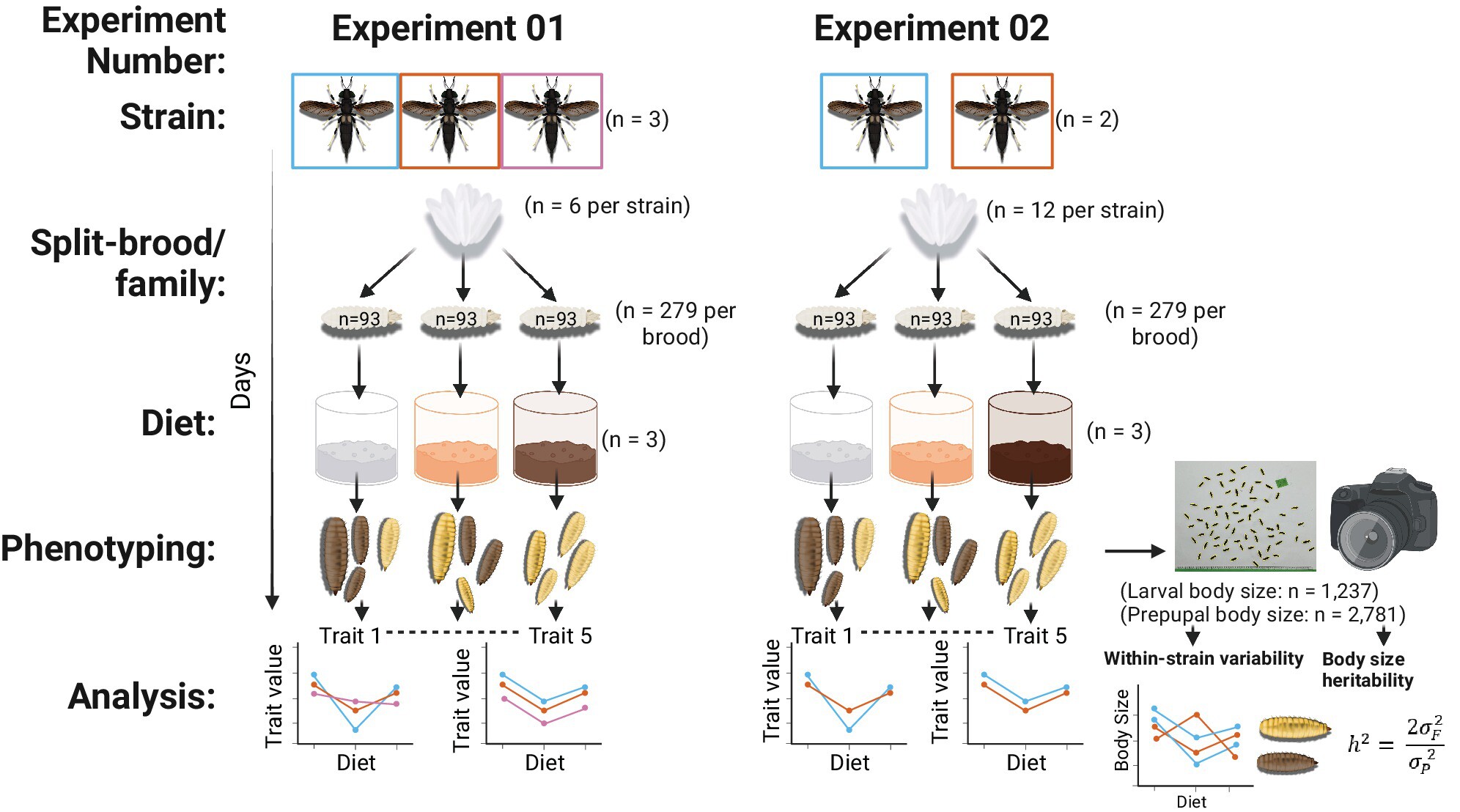
This study investigates genetic variation and heritability in the black soldier fly (Hermetia illucens), a key species for sustainable protein production. Using a standardised split-brood design, we exposed three domesticated strains of Hermetia illucens to three dietary substrates and demonstrated strong genotype-by-environment interactions. Moreover, body size measurements of 4084 individuals (larvae and prepupae) belonging to two strains revealed high heritability. These findings suggest the potential for developing substrate-adapted strains and strong potential for artificial selection to enhance the insect livestock industry.
Genotype-by-environment interactions for mean performance and trait variation in house fly larvae reared on two diets
- Pages: 575-589
- First Published: 18 November 2024
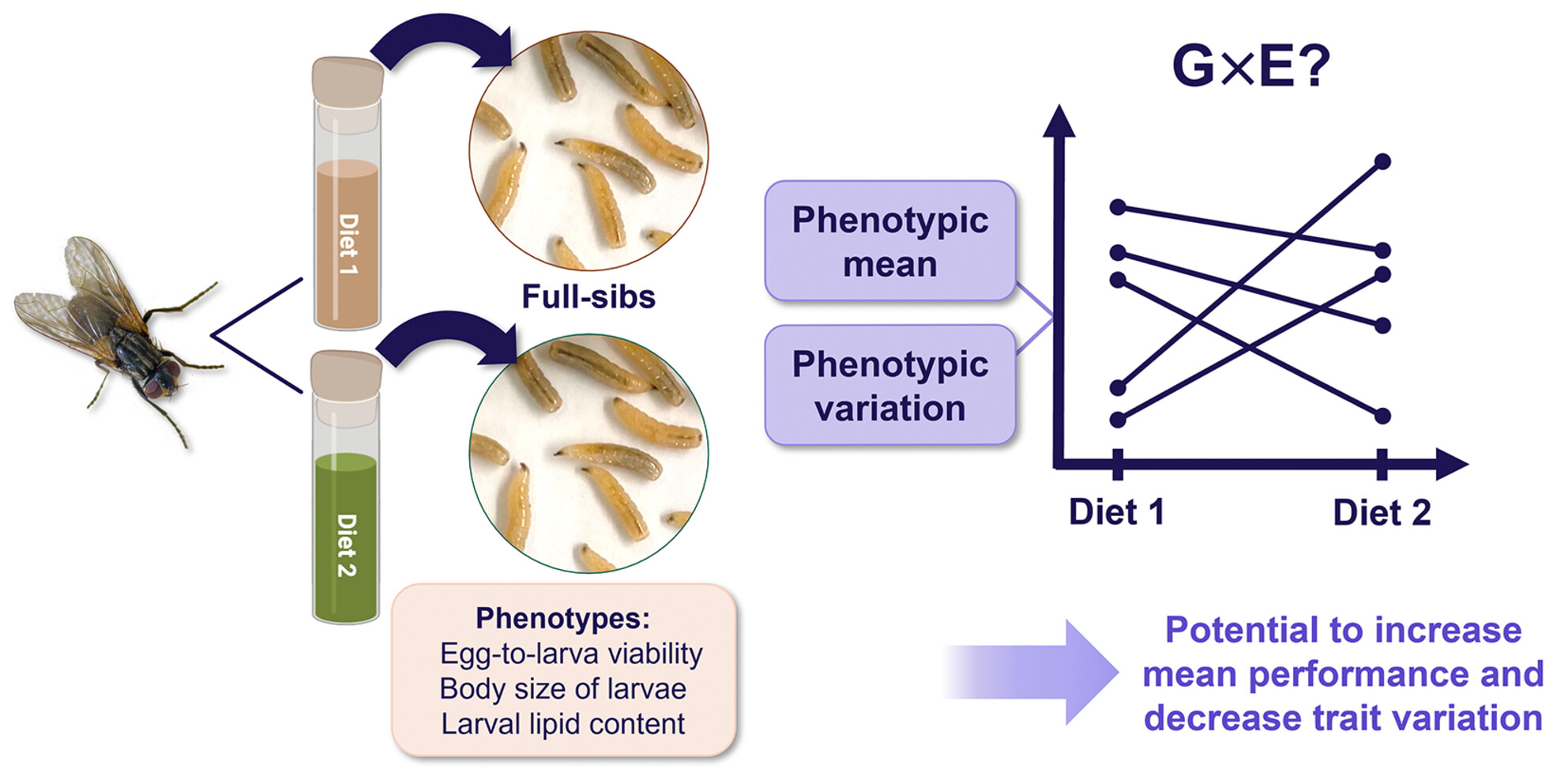
This study revealed the existence of genotype-by-environment (G × E) interactions for mean performance and trait variation in production-relevant house fly, Musca domestica L. (Diptera: Muscidae), larval traits by rearing 190 full-sib families on two diets. Traits: egg-to-larva viability, larval surface area, dry weight and relative lipid content. Our results demonstrate a potential to increase not only mean performance within and across diets but also phenotypic homogeneity, for example through selective breeding, which will have great implications in optimisation of insect production for food and feed.
Diet
Supplementation of maize bran with either sunflower or oil palm seed cakes improves growth and nutritional value of the edible house cricket (Acheta domesticus)
- Pages: 590-602
- First Published: 02 April 2025
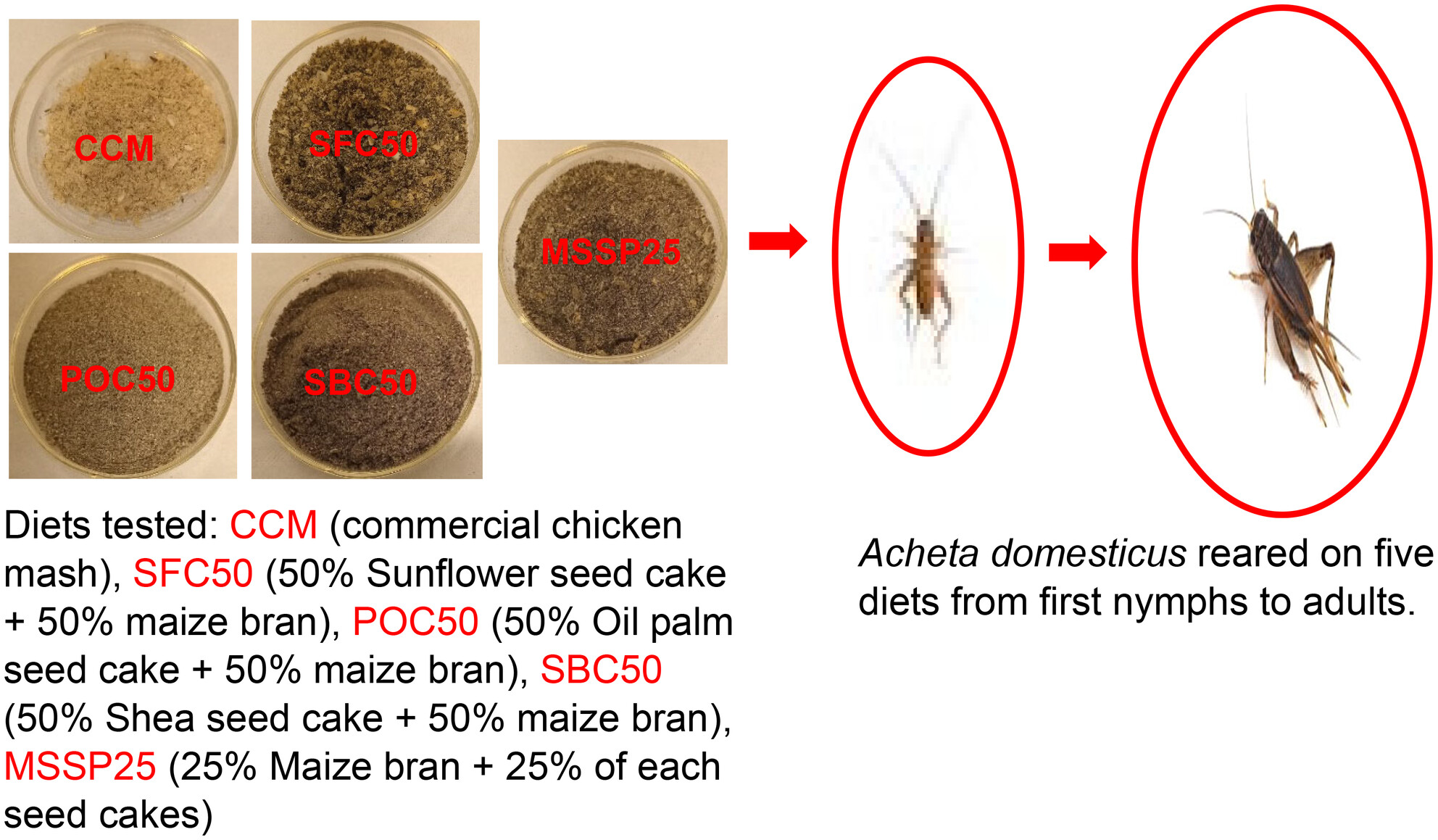
The house cricket (Acheta domesticus) is one of the main edible insects successfully domesticated globally. However, production of A. domesticus is constrained by expensive feeds. Our study aimed at developing a cheaper alternative feed for A. domesticus by supplementing maize bran with oil seed by-products (sunflower, oil palm, and shea seed cakes). Supplementation of maize bran with 50% of either sunflower or oil palm seed cakes enhances A. domesticus growth and modifies its lipids, minerals, and polyunsaturated fatty acids.
Rhynchophorus phoenicis production: A comparative study of different rearing protocols
- Pages: 603-615
- First Published: 16 April 2025
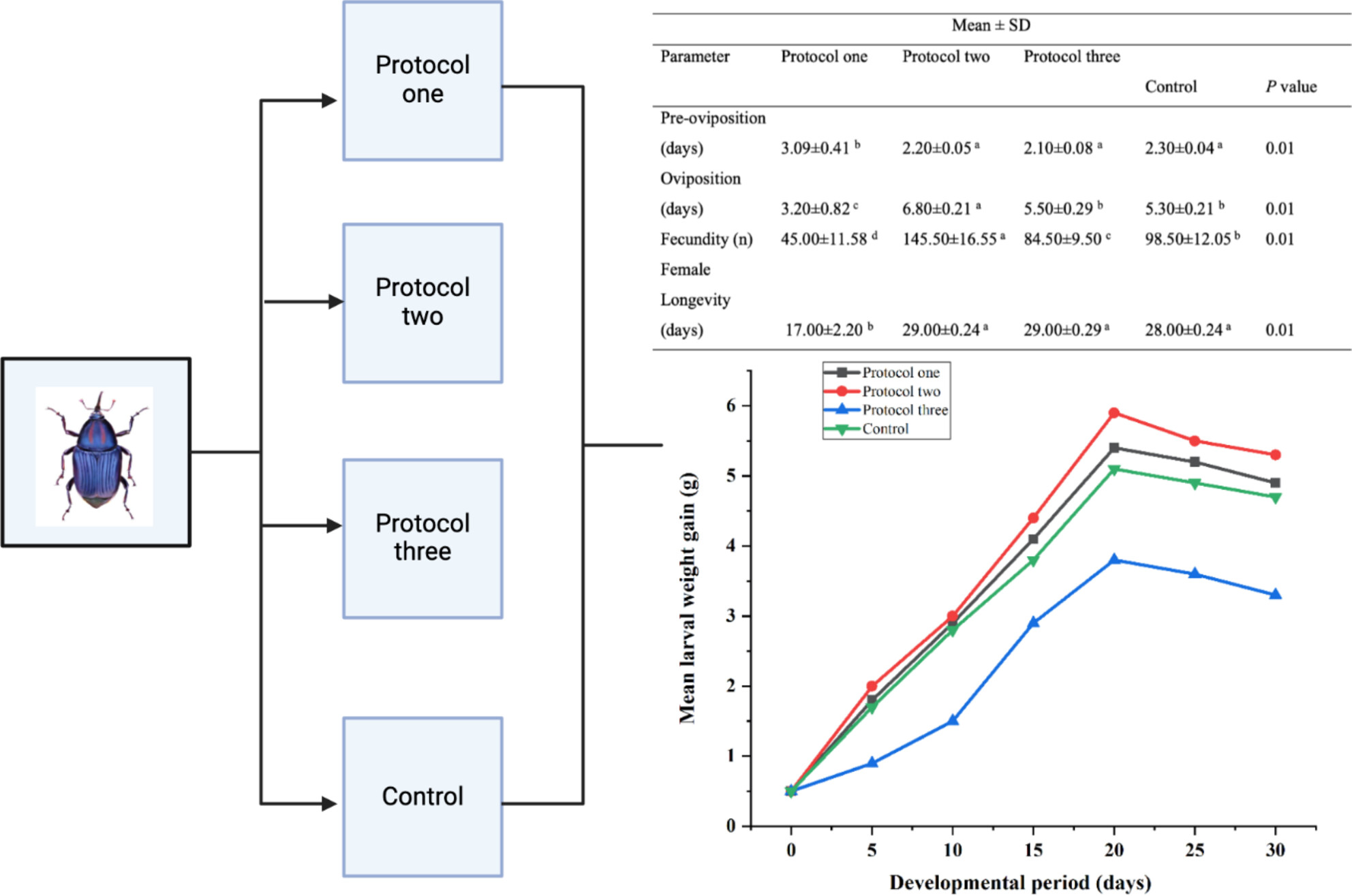
As consumers heavily depend on the wild collection of the Rhynchophorus phoenicis larvae, a containerized rearing system is required to enhance the availability of the larvae. The study investigated the use of different rearing protocols for producing the larvae. The results revealed that the highest fecundity and larval mean weight gain were recorded in Protocol 2, while the lowest was recorded in Protocol 3. Therefore, farmers can adopt Protocol 2 to increase productivity. The study provides a foundation for improving larvae production all year round.
Influence of agricultural waste-based diets on growth performance, gut microbiome composition, and volatile organic compound profiles in Zophobas morio
- Pages: 616-626
- First Published: 05 April 2025
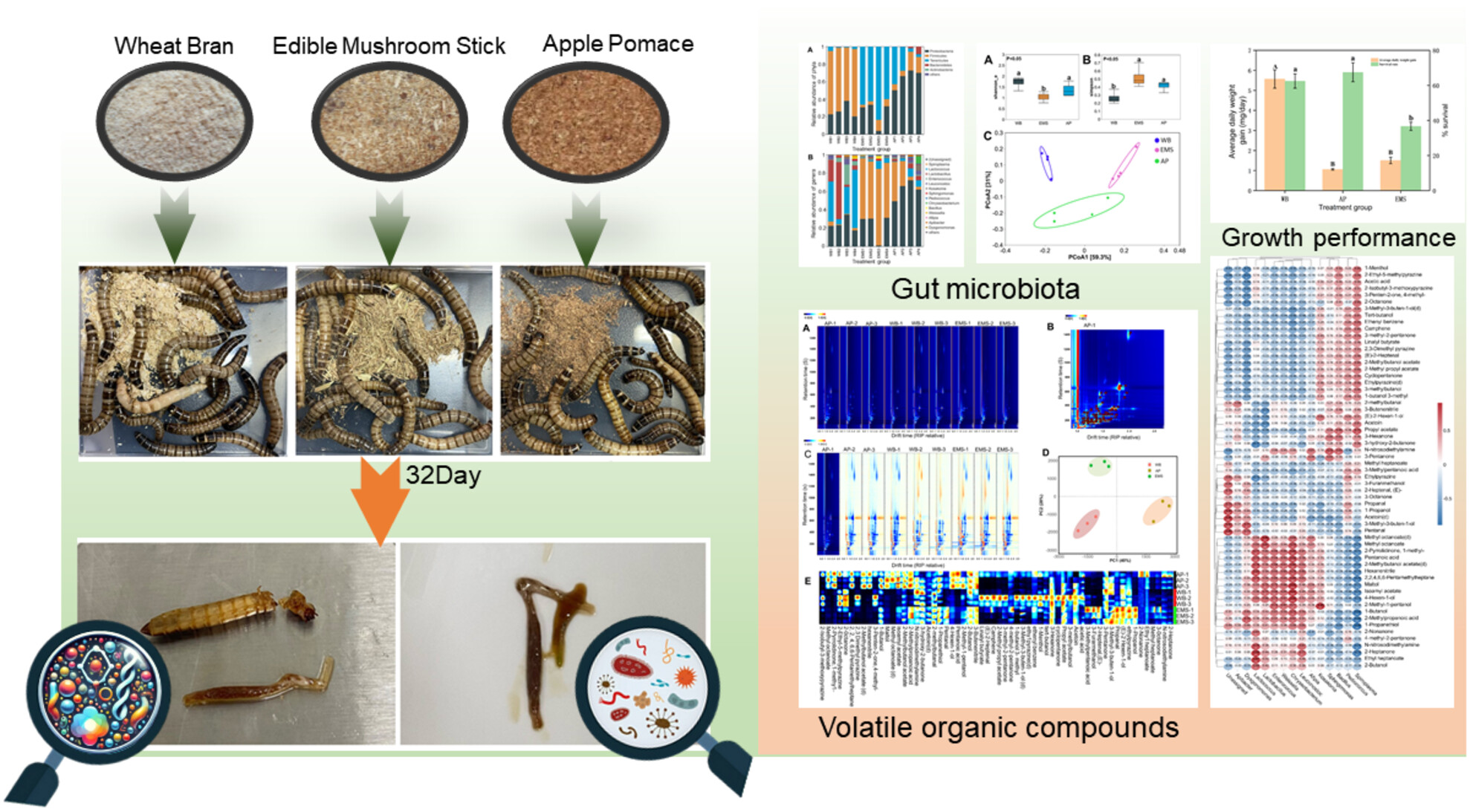
This study examined the effects of agricultural waste-based diets on growth performance, gut microbiota, and flavor of Zophobas morio. Wheat bran promoted weight gain and enriched Lactobacillus, whereas apple pomace enhanced sweet volatiles but reduced growth performance. Edible mushroom sticks increased Spiroplasma abundance without improving growth performance. Gut microbiota shaped the volatile organic compound profiles, thus influencing insect flavor. These findings provide a basis for optimizing Z. morio for sustainable agricultural waste recycling and edible protein production.
Other Culturing Conditions
Effects of mating age and male mating experience on reproduction and longevity of the edible insect Clanis bilineata tsingtauica
- Pages: 627-633
- First Published: 01 April 2025
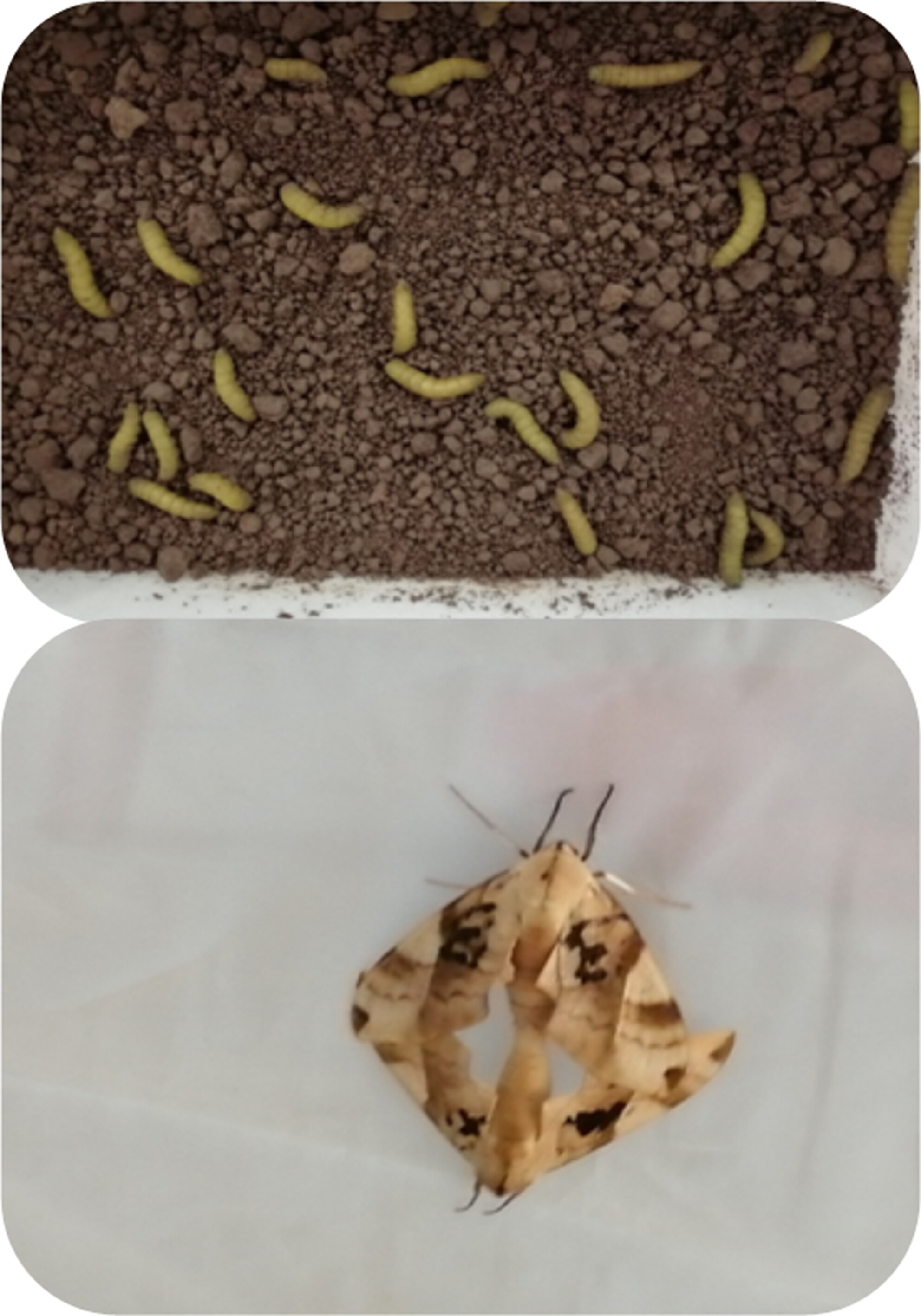
Clanis bilineata tsingtauica Mell is a valued edible insect in China. However, their reproductive behavior remains largely unexplored, which limits their mass rearing. We investigated the mating system and effects of mating age, male mating experience, and mating duration on the reproduction and adult longevity of this insect. The results indicate that lower mating age, lower male mating experience, and longer mating duration lead to a higher reproductive output. These results would facilitate the mass rearing of this edible insect.
Heritability of morphological traits and mating probability of males derived from successful parents of the Anastrepha ludens Tapachula-7 strain
- Pages: 634-641
- First Published: 24 March 2025
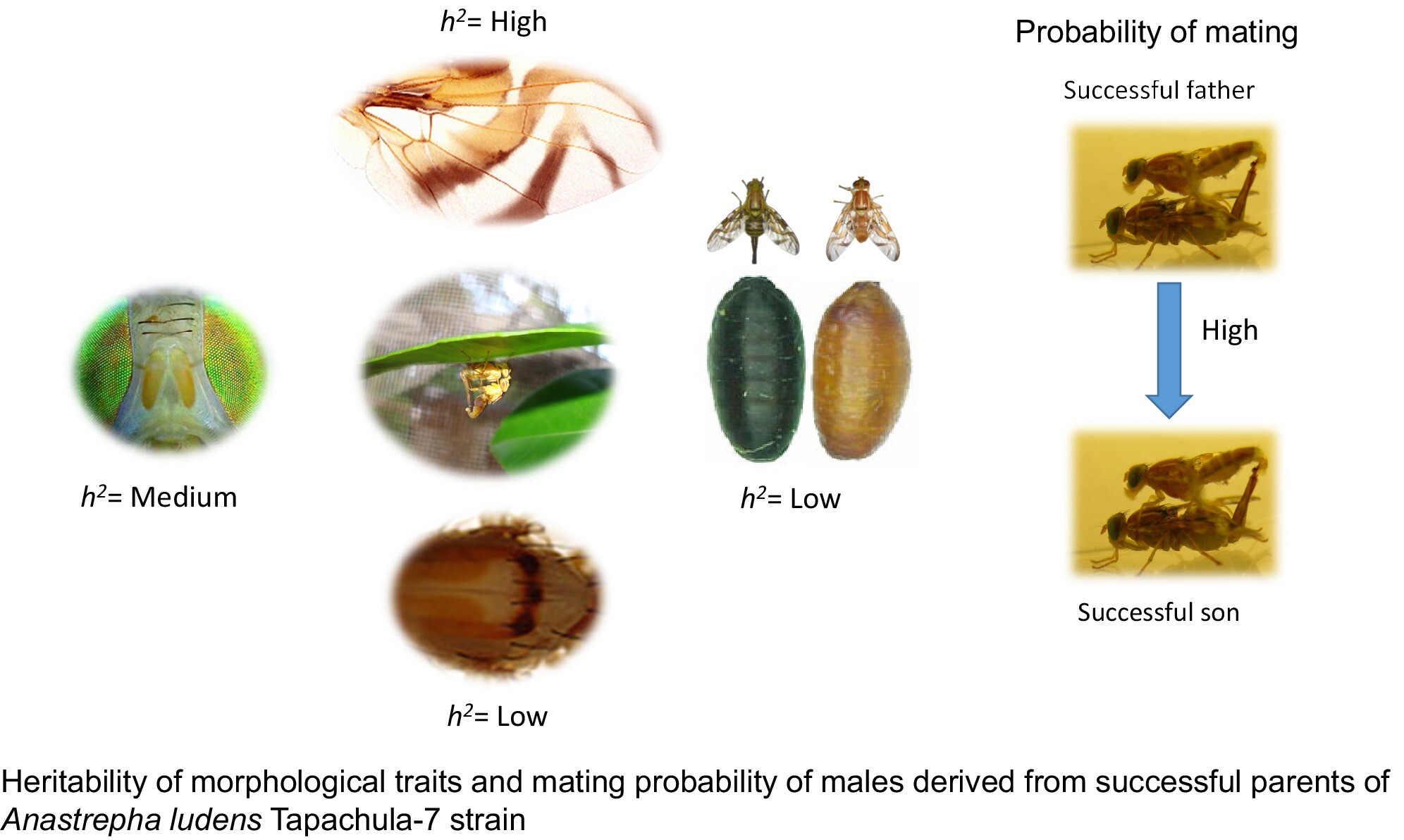
Heritability measures the genetic variation of a phenotypic trait that is passed from one generation to the next. In the Tapachula-7 strain of Anastrepha ludens, females select males based on chemical, acoustical, and visual signals. Here, we showed that males derived from successful parents had a greater probability of mating than those derived from non-successful parents. Estimation of heritability for pupal weight, thorax length, head width, and wing length suggests a genetic association between reproductive success and morphological traits.
The effect of the egg storage time on the hatching success, morphometrics of larvae, and adult emergence of Aedes aegypti and Aedes albopictus
- Pages: 642-647
- First Published: 05 April 2025
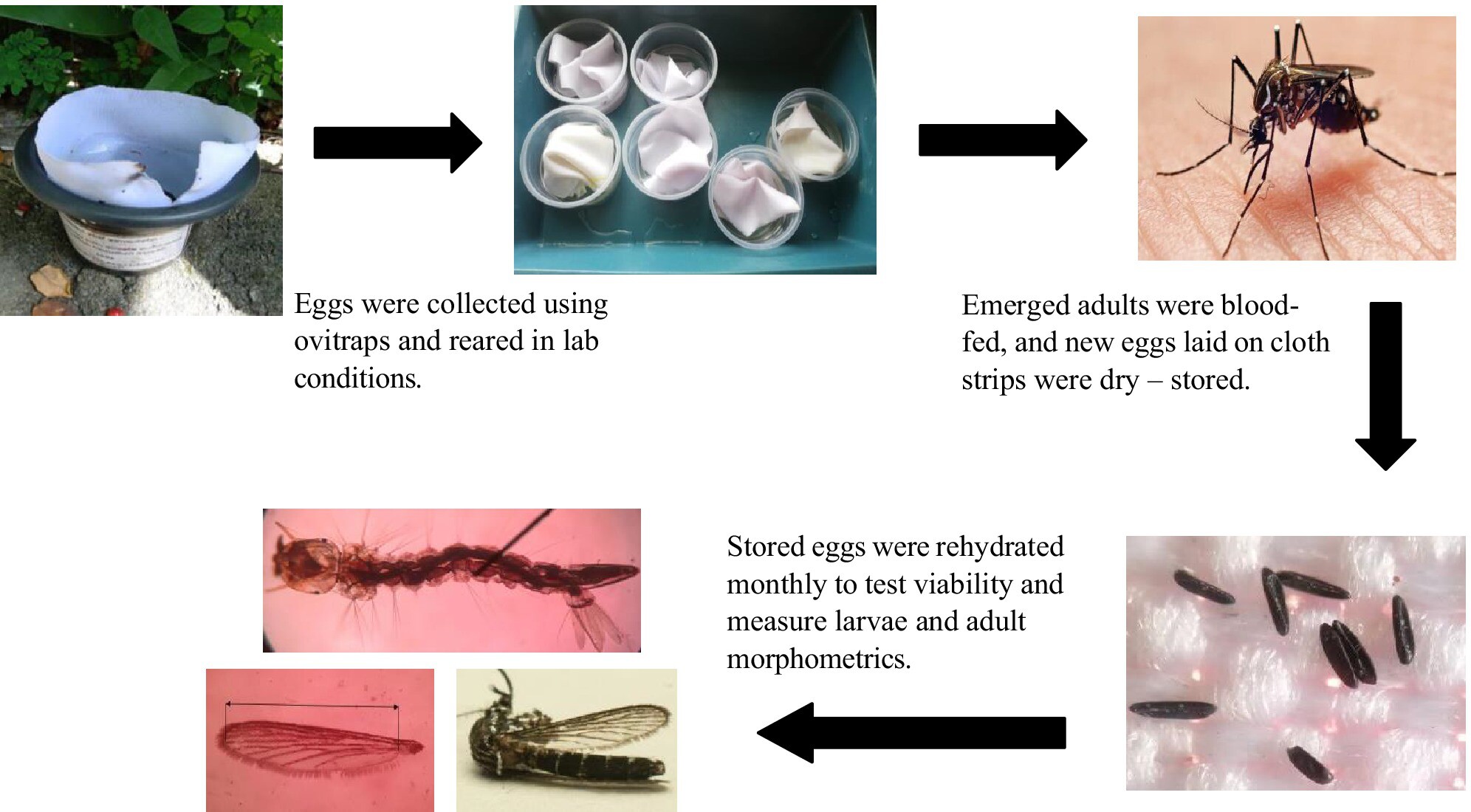
This study examined the viability of Aedes aegypti and Aedes albopictus eggs under dry storage and its impact on larval and adult morphometrics. Eggs collected via ovitraps were reared, and emerged adults were blood-fed. New eggs were dry-stored and rehydrated monthly. Results indicated a decline in egg viability and delayed adult emergence over time, negatively affecting larval morphometrics. However, adult morphometrics remained unaffected, suggesting that while storage impacts egg viability and larval morphometrics, it does not influence adult morphometrics.




